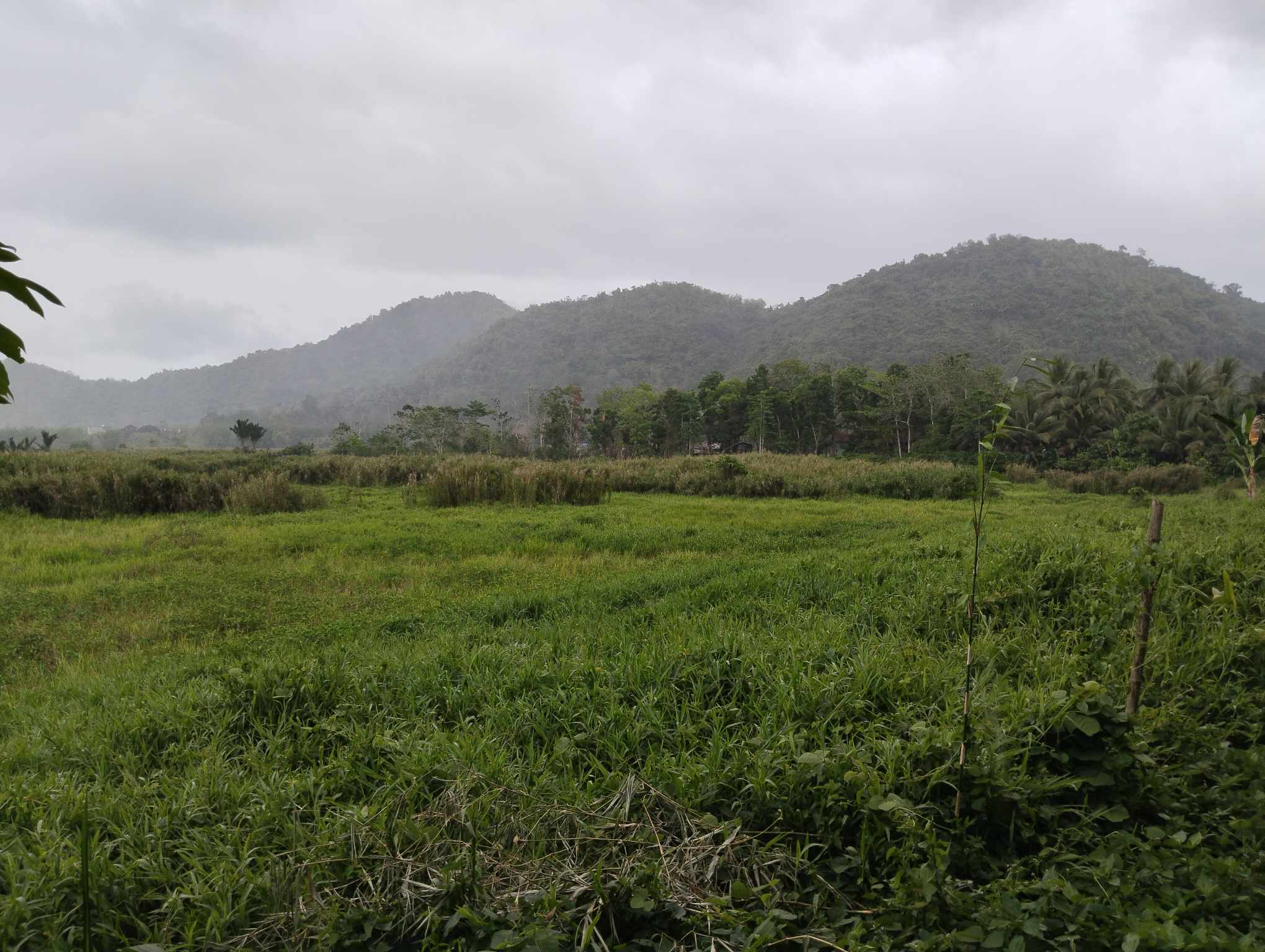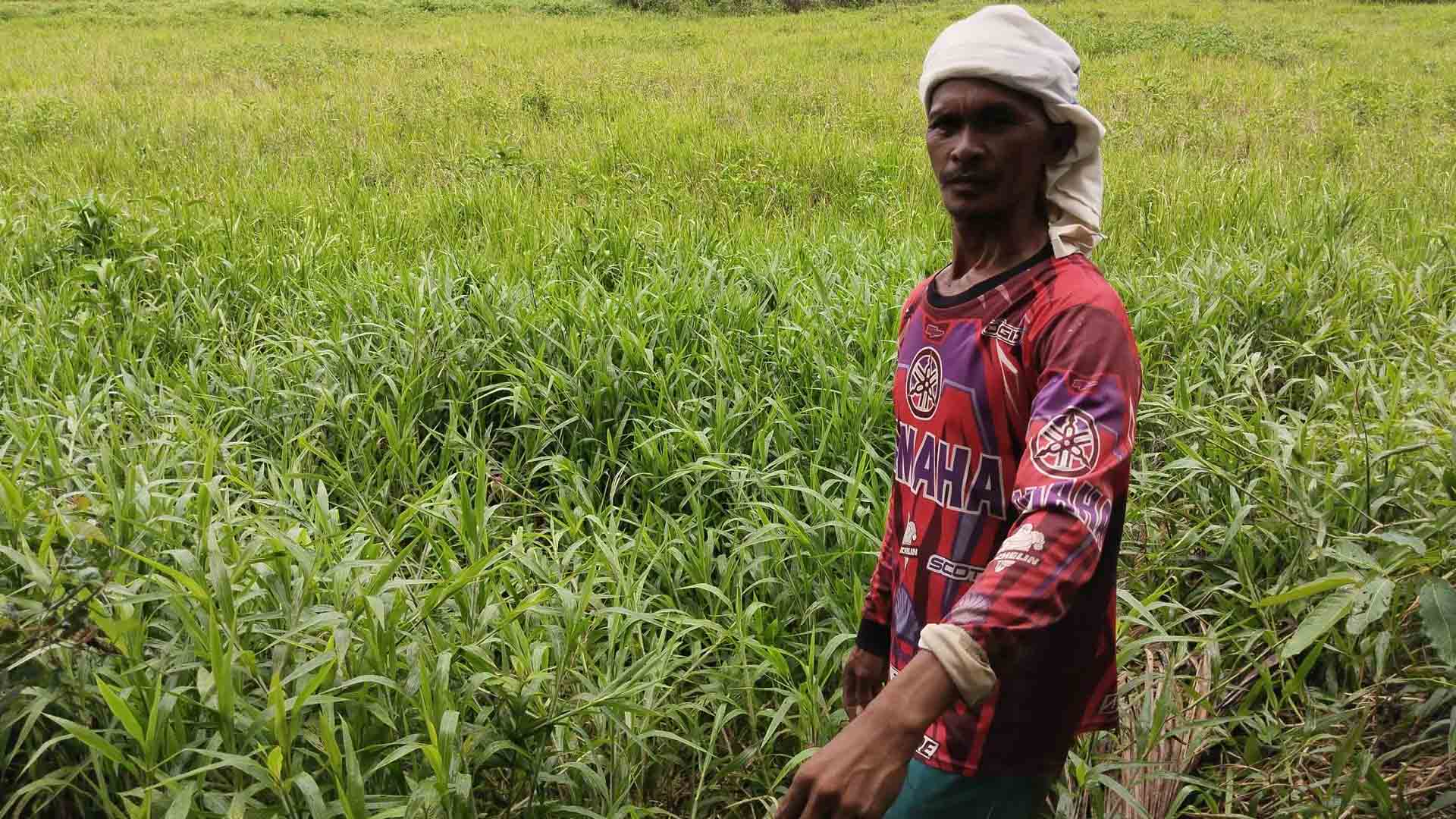For three decades, Joey Mercades, 40, has been highly dependent on resources from the nearby peatland to support his growing family.
Just like the rest of his neighbors, his awareness on the importance of this distinctive wetland type is very limited.
With little education and no land to till just like his forefathers, Mercades spends most of his time catching fish and gathering whatever valuable plants from the peatland in San Isidro village here to feed his wife, Roisa, 27, and their five children.
He earns an average of PHP200 daily from catching pantak (freshwater catfish) and some wild plants from Leyte Sab-a Basin Peatland (LSBP), the country’s second-largest peatland next to Agusan Marsh.
A portion of this wetland is located just behind Mercades’ makeshift house made up of rotten wood, with some portions patched with empty sacks or old fabric.
Pantak, a native catfish, is in demand in the community since it is better tasting than the foreign catfish species introduced in the country.
In a 2022 study by the International Institute of Rural Reconstruction (IIRR), the group found five fish species from the pool and stream channel habitats of LSBP. The five fish species were catfish, striped snakehead, climbing perch, snakeskin gourami, and tilapia.
The Department of Environment and Natural Resources (DENR) said fishing within the peatland is strongly discouraged since local catchers commonly use electro-fishing method.
It is a technique that uses direct current electricity flowing between a submerged cathode and anode.
This affects the movements of nearby fish and kills other freshwater species.
“Authorities have been coming to tell us that this is a peatland and there are prohibited activities, but we don’t really understand its function. We just live here since we don’t have any place to go to,” Mercades told the Philippine News Agency.
His neighbor, Neomi Ending, 26, said they were informed that behind their houses is a peatland and they’re not allowed to start fire, plant, gather wood, or catch fish.
“If my husband has no work in the construction firm, his option is to go fishing so we won’t go hungry. We have no other alternative,” said Ending, whose husband, Joseph, earns PHP300 daily as a roadwork laborer to support their three children.
The families of Mercades and Ending are among the estimated 20 households living near the confirmed peatland in San Isidro village here.
The settlement is located along an alternative road that links Sta. Fe town to Tacloban City, the regional capital.
Most of the makeshift houses and toilets were built near the peatland’s stream channel, where household waste drains. There are also farming activities near the peatland.
IIRR reported that a recent study on the impact of land-use conversion in LSBP revealed that when peatlands are turned into grasslands or agriculture, their ability to act as carbon sinks is reduced.
The study found that moisture and the water table decreased from forest to cultivated areas. This ability of the peatland to hold water is essential to flood mitigation. It acts as a sponge during the rainy season, letting the water seep out during the dry season.
Ending confirmed that in recent years, flooding has been more evident in the peatland during rainy days.
“This is the most evident threat that we are aware of,” she added.
Carbon emission
For Winston Solite, chief of Leyte’s Provincial Environment and Natural Resources Office (PENRO) technical service division, flooding is just one of the problems.
Without disclosing figures, he said there are also increasing greenhouse gas emissions from the peatland.
“Draining the peatland by building water canals for planting may lead to the oxidation of peat, making it more vulnerable to peat fires, which can take time, and the burning of peatlands makes the peat a carbon emitter instead of a carbon storage,” Solite added.
Peatlands store up to 30 percent of the world’s carbon.
If degraded, it becomes a significant source of greenhouse gases, releasing almost five percent of global carbon emissions caused by human activities, according to the IIRR.
Land conversion

LSBP is the second-largest peatland in the country. It was confirmed to measure 2,107.64 hectares, covering the villages of Gapas and San Isidro in Sta. Fe town; Divisoria, Langit, Tabongohay, and Veteranos in Alang-alang town; and Capilihan and Guinciaman in San Miguel town.
Citing studies by the Visayas State University, some 38.5 percent of the peatland is threatened, mostly by land use conversion and fires.
But the problem of land conversion can be traced back to the 1970s. That was the time when the swamp forest and the most significant water catchment basin in Leyte were identified by the government as becoming Leyte’s food basket, resulting in the degradation of more than half of its cover.
“There’s a very low level of awareness about the existence of peatland in the country until 2015, when smoke from peatland fires in Indonesia reached some parts of our country,” Solite recalled.
Better management
To better manage the peatland, Leyte PENRO is drafting a memorandum of agreement establishing a governing body responsible for overseeing interventions and plans within the peatland area. This is done through consultations with local government units.
“I hope we continue to extend to other people our appreciation for peatland, its role, and why it should be protected because once it is damaged, it will be gone forever,” Solite concluded.
The presence of biodiversity calls for bolder moves to preserve the peatland. This was found through trail marks, animal tracks, animal poops, feathers, skulls, and other wildlife derivatives.
Among the threatened and vulnerable species present in LSBP are the Philippine duck, blue-naped parrot, Philippine frogmouth, Philippine nightjar, Samar Water Monitor, Philippine box turtle, Philippine tarsier, and common palm civet.
Leyte’s Sab-a Basin exhibits diverse vegetation, having a wetland forest, boggy areas, sedge and grasslands, and a diversity of endemic flora and fauna, as well as threatened animals and freshwater fish species found mostly in the wetland forest ecotype. (PNA)





















